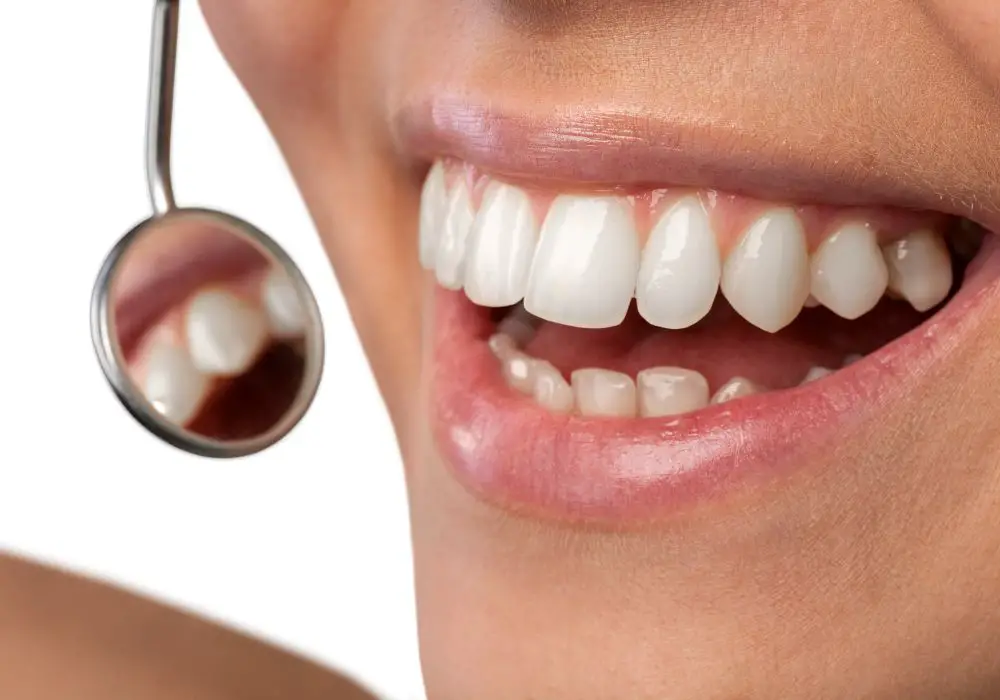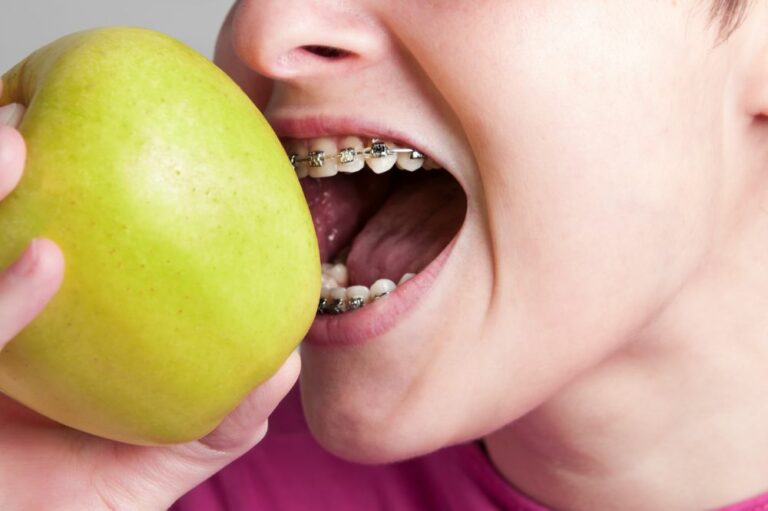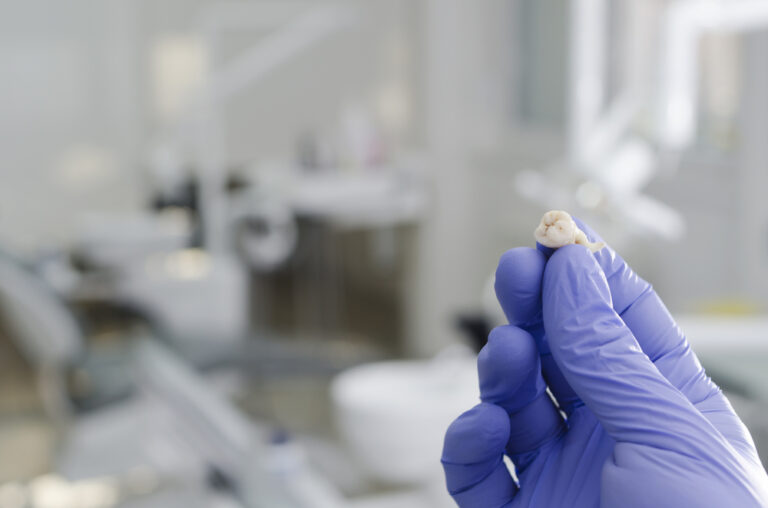Having loose teeth can be worrying. You may wonder if simple home remedies like coconut oil could help stabilize them. This article explores whether coconut oil can effectively tighten loose teeth and provides an in-depth overview of the causes, symptoms, and treatments for this condition.
What causes loose teeth?

There are several potential causes of loose adult teeth:
Gum disease
Gum disease, also called periodontal disease, affects the tissues that support the teeth. It is caused by a buildup of plaque bacteria on the teeth. As the disease progresses, it can damage the periodontal ligaments and bone structure holding the teeth in place, leading to tooth looseness.
Gum disease develops in stages, starting with gingivitis. In this early stage, plaque buildup on the teeth causes the gums to become inflamed and bleed easily when brushing or flossing. Although gingivitis does not cause permanent damage, if left untreated, it can advance to periodontitis.
With periodontitis, plaque spreads below the gumline and begins eating away at the fibers and bone that secure the teeth. Toxins from plaque bacteria trigger chronic inflammation, which breaks down the periodontal tissues. Pockets form between the gums and teeth, facilitating more bacterial growth and further infection.
As the plaque and tartar deposits deepen and the tissue-damaging inflammation worsens, the teeth loosen. In advanced cases, they may even become so loose that they fall out.
Injury
Injuries that result in a hit or blow to the teeth can loosen them. Examples include sports injuries, falls, and automobile accidents. The impact can strain the periodontal ligaments and vessels that support the tooth roots. This trauma can shear off some of the ligament attachments.
If a tooth is hit at an angle, just one side of the root may be affected. This can cause the tooth to become looser and change alignment. The tooth also may feel painful when chewing and touching. Professional evaluation is important after a dental injury to check for damage or looseness.
Grinding and clenching
Habitual teeth grinding (bruxism) and clenching can put excessive force on the teeth. This constant pressure can inflame and loosen the ligaments over time. The upper teeth often take the brunt of grinding, while powerfully clenching the lower jaw strains those teeth.
People are more apt to clench or grind their teeth when under stress. These habits can flare up during times of high pressure. Chronic grinding and clenching wears down the chewing surfaces of teeth and may crack enamel. In addition to looseness, symptoms include jaw soreness, dull headache, and teeth sensitivity.
Root loss
Loss of root structure due to infection, injury, or decay can result in reduced bone support and unstable teeth. For example, untreated tooth decay can burrow down into the tooth pulp and roots. Deep decay undermines the foundation of the tooth, which depends on sound roots embedded in the jawbone.
Cracked tooth roots are also vulnerable to infection and breakdown. Likewise, serious injury may fracture roots or dislodge part of the root structure. As roots become compromised and fail, the tooth loosens and eventually will require extraction.
Aging
As we age, changes in our jawbone density and the strength of the ligaments holding our teeth in place can cause tooth looseness.
With advancing age, the mandible and maxilla bones lose mass and density due to conditions like osteoporosis. Loss of bone mass means the teeth have less thick, solid bone in which to be anchored via their periodontal ligaments. This reduced bone support allows more minor looseness over time.
The periodontal ligaments themselves also weaken with age. Aging cells cannot regenerate as quickly or robustly. Older ligaments are more likely to detach from the tooth surfaces due to inflammation or strain. Weakening ligaments translate to loosening teeth.
Osteoporosis
Osteoporosis causes progressive bone loss and may contribute to loose teeth, especially in post-menopausal women. The hormone estrogen plays a key role in helping retain bone mass. During menopause, sharp declines in estrogen accelerate bone loss.
In the jaw, lower estrogen exposes women to faster reduction of the alveolar processes that house the tooth roots. With decreased bone density and volume around the roots, the teeth become less stable and more prone to loosening. Osteoporosis also impedes the body’s ability to rebuild lost bone after the inflammatory damage of periodontal disease.
Pregnancy
Some women experience tooth looseness during pregnancy. Possible causes include hormonal changes that affect tissues and bone density along with nausea and vomiting that increase oral acidity.
Rising progesterone and estrogen levels during pregnancy can increase inflammation and capillary permeability. This facilitates more rapid spread of bacteria and toxins from plaque that break down gum tissue. Pregnancy gingivitis is quite common.
Repeated vomiting brings stomach acids in contact with the teeth, which can erode tooth enamel and dentin. This damage to tooth structures contributes to mobility. Vomiting can also exacerbate loss of minerals from tooth surfaces and jawbone.
Tooth looseness due to pregnancy often resolves after giving birth. But diligent oral hygiene and routine dental treatment helps minimize the risks.
Orthodontic treatment
After having braces or aligners, teeth can feel loose as the ligaments and bone reconnect in their new positions. Orthodontic forces move teeth in their sockets by controlled damage to the periodontal ligaments. These fibers tear on the side of the applied force so the tooth can shift.
Once teeth reach their intended place, the ligaments must reorganize and reattach as bone reforms around the roots. This takes several months. As tissues regenerate, teeth may feel a little loose. Proper orthodontic retention helps stabilize teeth in their corrected alignment.
Signs and symptoms of loose teeth

How can you tell if a tooth is becoming loose? Signs and symptoms include:
- Visible movement or shifting of the tooth in its socket
- A tooth that feels wiggly or jiggles when you push on it
- Teeth that spread apart or drift out of alignment
- Changes to your bite – teeth may not fit together as they did before
- Gaps appearing between teeth when smiling
- Sensitivity or pain when chewing or eating
- Difficulty biting into foods
- Tooth pain when brushing
- Bad breath that persists despite oral hygiene
- Metallic taste in the mouth
- Swollen, tender, or bleeding gums
The most frequently affected teeth are the lower front teeth and the upper molars. However, any tooth can become loose. Looseness usually starts gradually but can worsen quickly in cases of trauma or periodontal infection. Precise diagnosis requires an oral exam by a dentist.
Dangers of leaving loose teeth untreated
While a little bit of movement in an otherwise healthy tooth may not be an emergency, significant looseness that is getting worse should be evaluated promptly. Leaving loose teeth untreated can allow the problem to progress, leading to:
- Increased tooth mobility and eventual tooth loss as the ligaments detach
- Difficulty chewing or biting down due to tooth instability
- Tooth fractures as loose teeth shift and contact heavy
- Progressive bone loss around tooth roots as inflammation damages the jawbone
- More rapid advancement of gum disease deeper into tissues
- Infection spread that can impact the jawbones, other teeth, or systemic health
- Adverse effects on facial structure and premature aging as tooth support fails
- TMJ problems or bite issues due to tooth movement and instability
- Speech impediments from difficulty making certain sounds
- Poor nutrition if eating becomes difficult and limited
In cases of mild, stable looseness, careful monitoring may be warranted. But when teeth are progressively looser, prompt treatment gives the best chance of saving them. Loose for too long, the teeth may be unsalvageable and require extraction.
Can coconut oil tighten and strengthen loose teeth?
Coconut oil has gained popularity as a natural remedy for oral health. With antioxidant, antimicrobial, and anti-inflammatory properties, can swishing or applying coconut oil help secure loose teeth?
Some proponents claim that coconut oil “pulling” or “swishing” can pull toxins from the mouth, reduce plaque, and support periodontal health to tighten teeth. However, there is a lack of robust evidence that oil pulling provides meaningful lasting benefits for loose teeth.
A few small studies found coconut oil swishing reduced gingivitis and plaque counts compared to placebo rinses. Results were similar to using an antiseptic rinse like chlorhexidine. However, oil pulling’s effects on plaque regrowth were short-term.
There is no proof yet that coconut oil can reattach and regenerate damaged periodontal ligaments or rebuild lost bone. Case studies have reported oil pulling improves halitosis and gingivitis, but not necessarily looseness. Any positive impacts seem temporary and comparable to using other rinses.
While coconut oil is generally safe for oral use and makes a pleasant tasting lip moisturizer, there is no confirmation that it can substantially strengthen loose teeth or treat underlying gum disease. More rigorous research is needed on coconut oil’s oral health effects, optimal protocols, and mechanisms.
In summary – coconut oil may provide mild short-term benefits through reducing gingival inflammation and bacteria when swished around the teeth and gums. But it does not cure advanced periodontal disease or rebuild lost structures. Any minor tightening effect would be temporary.
Proven treatments for loose teeth

To stabilize and tighten loose teeth for the long run, proper professional dental treatment is required. Options range from non-surgical therapies to complex dentoalveolar surgery depending on the cause and severity.
Non-surgical treatments
Mild to moderate looseness from gum inflammation can often be treated with professional cleanings and improved daily care:
- Scaling and root planing – Deep cleaning below the gumline to remove bacterial plaque and tartar from tooth roots and smooth surfaces. This can help reduce gingival inflammation and depth of periodontal pockets.
- Medications – Antimicrobial mouth rinses like chlorhexidine or prescription antibiotic gels/chips placed right in periodontal pockets to fight infection and curb damage.
- Occlusal adjustment – Recontouring teeth that meet improperly to prevent trauma that further loosens teeth.
- Splinting – Stabilizing mobile teeth together with dental wires, composite, or metal bands. Provides support.
- Night guard – Worn at night to prevent grinding forces from traumatizing teeth and tissues.
- Regular cleanings – Consistent professional cleanings protect teeth and gums.
Mild orthodontic movement may also tighten teeth loosened by occlusal imbalance.
Surgical treatments
If non-surgical periodontal therapy fails to halt progressive looseness and bone loss, surgery may be needed. Goals are to stop disease, regrow lost tissues, and stabilize teeth.
- Open flap debridement – Folding back gum tissue for improved access to clean roots and repair bone defects.
- Bone grafts and tissue grafts – Help regrow bone and gum tissue lost to periodontitis. Can use natural or synthetic grafts.
- Crown lengthening – Reshapes gumline and bone to better support a loose tooth.
- Guided tissue regeneration – Uses barrier membranes to promote tissue and bone regrowth around tooth.
- Dental implants – Replace extracted unsalvageable teeth. Can also stabilize other teeth.
- Extraction – Removal of loose teeth unable to be saved.
In moderate-advanced cases, combining surgical and non-surgical techniques often works best. The aim is to stabilize teeth before they worsen and are lost. Close follow-up is key.
Regular dental visits
Ongoing dental cleanings and monitoring after intensive treatment allows dentists to check outcomes and intervene early if problems recur. Maintaining excellent oral hygiene and professional care helps optimize the longevity of treatment results.
Lifestyle measures to protect your teeth
In addition to professional treatment, making positive long-term improvements to daily habits can safeguard your smile:
- Quit smoking – Smoking raises the risk of periodontal disease, tooth loss, and implant failure. Kicking the habit supports gum and tooth health.
- Manage chronic conditions – Problems like diabetes and osteoporosis increase risks for loose teeth. Work with your doctor to keep these under optimal control.
- Eat a nutritious diet – Diets rich in fresh fruits and vegetables, whole grains, dairy, lean proteins supply key nutrients for oral health and bone strength.
- Use a custom night guard if grinding – A properly fitted night guard distributed force evenly across your teeth to prevent damage if you grind or clench when sleeping.
- Stress reduction techniques – Chronic stress worsens teeth grinding and clenching. Relaxation practices like meditation help break this cycle.
- Take calcium and vitamin D – These nutrients strengthen bones and teeth. Supplement if diet is inadequate.
- Stimulate gums – Gentle gum massage boosts circulation to support periodontal health.
- Practice excellent oral hygiene – Proper twice daily brushing and daily flossing removes harmful plaque that damages teeth and gums.
- Avoid tooth damage – Prevent bites onto hard objects, use mouthguards in contact sports, and treat teeth grinding to protect your teeth.
- Get regular dental cleanings – Consistent professional cleanings allow early intervention for emerging problems.
When to see a dentist
You should consult a dentist right away if you notice any of the following:
- A tooth is visibly loose and moves easily in the socket
- You have multiple teeth feeling loose without a cause like recent orthodontics
- You experience gum pain, swelling, or spontaneous bleeding
- You have difficulty chewing, bite issues, or discomfort due to a loose tooth
- You notice drainage, gum boil, bad taste, or signs of infection like fever
- You have mouth injuries, cracks, or damage to a tooth
The dentist can identify the source of the problem using x-rays, periodontal probing, mobility testing, and a thorough exam. They will then advise you on appropriate treatment to stabilize your teeth.
Even minor looseness that is getting worse over time deserves attention. Prompt diagnosis and care from a dentist provides the best chance of saving loose teeth.
Frequently asked questions
Can you tighten loose teeth yourself at home?
There are no proven do-it-yourself home remedies that can permanently tighten loose teeth or correct underlying gum disease and bone loss. While coconut oil swishing may temporarily reduce gingivitis, it does not rebuild lost periodontal structures or address most causes of looseness. Proper professional treatment is required to stabilize loose teeth long-term.
How long do loose teeth take to tighten up after deep cleaning?
With non-surgical periodontal therapy like scaling and root planing, you may start to notice slight improvements in tooth tightness after a few weeks as inflammation subsides. However, it takes approximately 3-6 months for full healing and tightening of periodontal fibers after this treatment. Dentists will monitor progress at periodic follow up appointments.
My dentist said I have advanced periodontitis. Can my very loose teeth be saved?
There is still hope for saving loose teeth due to severe gum disease, although outcomes depend on factors like amount of bone loss and your body’s healing capability. Combining antibiotics, bite adjustment, gum surgery to regrow bone, and diligent oral hygiene can stabilize even badly mobile teeth. But you need prompt evaluation and intervention before it’s too late.
How do you fix loose teeth from bulimia?
Frequent vomiting from bulimia can erode tooth enamel and loosen teeth. Seeking treatment for the eating disorder is essential. A dentist can then help restore damaged teeth and gums. They may use fluoride treatments to strengthen enamel or bonding agents and veneers to repair eroded tooth surfaces. Splints are used to stabilize loose teeth. Ongoing dental care is a must.
Can braces tighten loose teeth?
In some cases, braces or Invisalign can successfully tighten teeth loosened by periodontal disease. The controlled forces move teeth as gums and bone heal after periodontal therapy. This approach requires close coordination between your dentist and orthodontist. But orthodontic movement can help stabilize teeth.
Can dentures or implants be used to replace loose teeth?
Yes, well-fitted partial dentures, complete dentures, bridges, or dental implants are excellent restoration options to replace hopeless teeth that must be extracted due to severe gum disease and loosening. After any salvageable loose teeth are stabilized and unusable teeth removed, replacements like dentures or implants can provide a stable, comfortable smile.
Summary
Having loose teeth can negatively impact oral health and quality of life. While coconut oil may temporarily reduce gum inflammation, lasting stabilization requires professional treatment adapted to your specific case.
If you notice looseness in your teeth, see a dentist promptly for an evaluation. They will diagnose contributing factors and recommend solutions, which may range from deep cleanings to surgical procedures and orthodontics. Excellent at-home oral care coupled with early intervention gives the best chance of retaining your natural teeth in good condition. Maintaining gum health and jawbone density through ongoing dental care helps keep teeth firmly planted.







